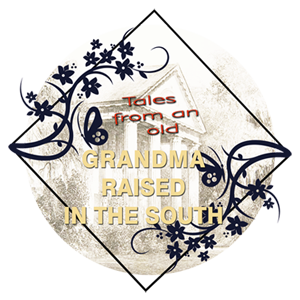
Genealogy research can be a very exciting and rewarding experience. For most, it’s the thrill of solving a challenging puzzle and connecting with ancestors in a meaningful way. It can also be frustrating to hit a dead-end or get overwhelmed by information overload.
The Good Old Days of Genealogy
When I started doing family research nearly 50+ years ago, you simply picked up an empty paper pedigree chart and filled it in with a pencil. The librarian demanded that a pencil be used to keep people from writing in the reference books with a pen. Back then, the libraries were poorly stocked with microfilm and microfiche. Getting what you were actually looking for was usually a hit or miss proposition.
Things have really changed!
Now this post is intended to be a simple quick start guide that will hopefully get anyone new to genealogy, off to a fast start.
Keep in mind that even the most knowledgeable genealogy experts started out as a beginner at some point. There is no shame in being a newbie.
Newcomers to genealogy are often confused about how to begin. Hopefully, this simple guide will help you to get started researching your family history quickly and inexpensively.
Armed with some basic supplies such as paper, pen, and a 3-ring notebook (with sheet protectors or file folders) is all you will need for now to get organized.
Now here is one of the changes since my humble beginnings! You will need access to a computer with Internet connectivity to take advantage of all the resources that are now available on the web. There were no personal computers in the 1950s.

A Quick Start Guide For The Beginner
The first step of this quick start guide is to identify your ancestors.
Take out a piece of paper and write down everything you know about yourself, your parents, your grandparents, and your great-grandparents. Real names, not nicknames!
List dates, places of birth, marriage, and death, as well as information about places of residence, church affiliation, military service, and occupation. Every little detail can matter!
Check your home for sources of information to document the facts you wrote down in step one.
Seek out family documents such as birth/marriage/death certificates, newspaper clippings, photograph albums, letters, scrapbooks, family bibles or any other sources that would help corroborate your facts.

Get familiar with the basic genealogy charts: Pedigree Chart and Family Group Sheets.
Both charts can be downloaded in PDF format for free at http://www.familytreemagazine.com/freeforms. You can fill out the charts electronically or print them out and fill out by hand on paper.
Another alternative, you can enter your information into a genealogy software program like Family Tree Maker, Legacy Family Tree, RootsMagic or online family tree builder.
Make contact with parents, grandparents, cousins, aunts and uncles who are knowledgeable about the family. A contact checklist could come in handy.
Create a list of all the information you are seeking and then call or send family members an email with your request. (Back in the day, this was all handwritten and required finding out a physical address!)

NOTE: Those close relatives are the most likely sources for records, pictures and stories about the family members you are interested in and may provide you with specifics on names, dates and places. But discount the fact that you may find some distant relatives who can also help! As with the case of ancestors who traveled west and were never heard of again.
Now is a good time to begin to organize your research.
This is where you’ll use those three ring binders with sheet protectors or file folders to store your paper documents in. The more family research you do, the more documents you will collect and small piles will quickly become mountains if you don’t get organized. Piles of paper are just that…piles of paper. Don’t fall into that trap!
It is also a good time to create a research plan of what data is missing and ideas of how to fill those holes.
Start a research log to document each action (both successful and not successful) you made to find the answers.
VERY IMPORTANT: Make sure to carefully cite your sources for each data element.
After you have been doing genealogy for a while, it will become abundantly clear that this step is very important to make sure your research never has to be redone.
Start the process of researching what you don’t know about your family’s history and building your family tree. Make a list of questions of things you would like to know about your ancestors.
Technically, a family history is never really finished as there is always more to discover. There’s always one more question to answer! Most likely, you will spend most of your time seeking records that document your ancestors’ major life events, but sometimes the minor things can add a little interest.
There are literally thousands of resources to aid your research, some are free, while some are subscription based like Ancestry.com. One of the best places for a beginner to start is the free online website FamilySearch.org. You can type your family member names into the search menu and see what you can find.
Sometimes other family members have already done some of the research for you, but remember…always VERIFY!
Keep learning and increasing your skills by taking advantage of the many resources available including books, magazines, websites, blogs, classes, podcasts, television programs, etc. Seek out others who share your interest in family history to bounce ideas off and be on the lookout for mentors that can help you with your research.
This simple quick start guide should give the beginning genealogist enough guidance to get off to a quick start and avoid some of the common pitfalls. The best advice is just to have fun as you connect with your ancestors in a meaningful way.
No one should ever be forgotten!

